Air Source Heat Pumps, and are Ground Source Heat Pumps "Geothermal?"
Let's clear up some confusion on terminology regarding heat pumps - search Google for Geothermal Heating Systems and you will find hundreds maybe thousands of companies using the word "Geothermal" to describe ground source heat pumps, two systems that have only one thing in common: they sit on and in the ground. Even government organizations muddy the story by calling them "geothermal heat pumps."
Real Geothermal systems use heat directly from natural sources like hot springs, geysers and volcanic hot spots which is a remote possibility across the USA & Canada wherever these conditions exist.
Ground source heat pumps or GSHP's are air conditioners that use groundwater or simply soil to cool the condenser instead of an external coil and fan. It uses electricity to pump heat energy from the place it isn't wanted to where it doesn't matter. Run it backwards and it pumps heat, more efficiently than using the electricity directly using a multiplying factor that is generally expressed as the COP rating (coefficient of performance).
So, what we are looking into here is definitely the comparison between the performance of GSHP's and ASHP's - and not really "Geothermal" heating in the true sense of the word - but hey - as many folks do call it that, they're also going to search for it, right?
GSHP's v ASHP's - how are they compared?
The Sustainable Technologies Evaluation Program (STEP) is run out of The Living City Campus at Kortright, ON, where you can find The Archetype Sustainable House (ASH). The two houses act as a living laboratory with more than 400 calibrated sensors that monitor the performance of the buildings' systems. There is also an on-site weather station measuring outdoor meteorological conditions, providing site-specific climate data.
Much research has been conducted through the STEP program, ranging from low-impact development storm water management to energy efficiency and renewable energy research. Ecohome will summarize and deliver this valuable information to our readers.
Quite often there is a chasm separating those conducting research from those in the field who would greatly benefit from the research conclusions and we are hoping to bridge that gap. This first study looks at two forms of heat pumps; ground source and air source.
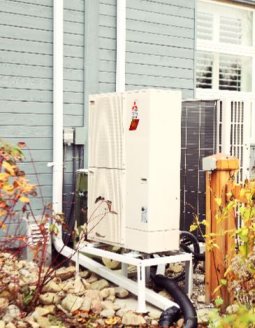 |
|
Zuba Central air source heat pump © Sustainable Technologies Evaluation Program
|
Heat pump technology is evolving rapidly, causing energy-savvy builders to take notice as the technology improves and the prices come down. If you are unfamiliar with how a heat pump works, imagine a refrigerator; it doesn't 'create' cold, it simply condenses heat on one side of an enclosure and moves it to the other side. The heat is released through coils on the back of the fridge and warms your house a little bit in the process, which is the same process that is happening with an air source heat pump (ASHP) sitting inside or outside your home. "Heat pump" is the pertinent part of the name here - these systems basically pump heat around from where it isn't wanted to where it is, or where it doesn't matter. This is why there exist so called split systems, as these can both heat and cool - depending which way the pump is running.
It may at first seem counterintuitive to use cold winter air to heat your house, but as long as the temperature is above absolute zero (-273°C), there is some heat energy present. No exchange of air takes place from inside to out with an ASHP; heat is simply condensed outside and dispersed inside as interior air is circulated through heated coils. In summer, the system reverses to cool your home.
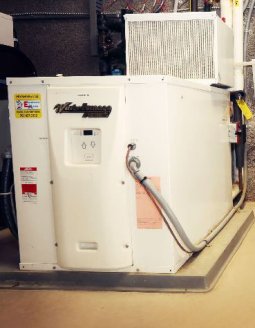 |
|
WaterFurnace ground source heat pump © Sustainable Technologies Evaluation Program
|
A ground source heat pump (GSHP) operates under the same principle, extracting heat from the ground which can then be used to heat homes. That, right there, is the concept of geothermal heating in a nutshell. GSHPs also work in reverse to cool your home, which is an important factor in the efficiency of the system - while cooling your home in summer you are warming the ground for the next heating season. Whichever system you choose - air or ground source, condensing and moving heat from one place to another is much more efficient than generating heat and that is the reason that heat pumps are a hot topic in the performance building community.
What we will cover here are the conclusions of a comparison between ground source and air source heat pumps, in terms of overall cost as well as efficiency in performance to ascertain which is the best.
Mechanical heating systems being tested:
House A
Heated with a 10.5 kW (3 ton) high-efficiency variable capacity air-to-air source heat pump manufactured by Mitsubishi™ with a direct expansion coil air handling unit (AHU) and a multi-speed fan to supply warm and cold air for space heating and cooling.
House B
Heated with a 13.3 kW high efficiency ground source heat pump manufactured by WaterFurnace™ connected to two 152.3 m (500 ft) horizontal loops in the yard.
Ground source heat pump vs. air source heat pump - which works best?
What is interesting to note right from the beginning, is that during testing, both heat pumps as stand-alone units (i.e. not including circulator pumps or blowers) actually exceeded manufacturer and EnerGuide ratings, with Coefficients of Performance (COPs) above 5 in the cooling season and above 3 in the heating season.
Disregarding installation costs for the moment, here is what that would mean on a monthly utility bill - conventional electric resistance heat (baseboard heaters, boilers, toasters, hairdryers, etc.) has a COP of 1, meaning one unit of electricity produces one unit of heat.
So, a COP of 3 means you are getting three times more heat for every dollar you spend with a heat pump compared to a normal electric heater. Air conditioning units typically have a COP of between 2 and 3, so if a heat pump in cooling mode has a COP of over 5, you could reasonably expect to cut your operational cost in half compared to a dedicated A/C unit.
There are other factors at play that may lower efficiencies and some system configurations that could increase efficiencies, but we will stick to the basic performance here. Greater details can be found in the full technical brief.
Air temperatures vary much more than ground temperatures in all seasons, so ground source geothermal systems have one distinct advantage in the form of more predictable and consistent operating conditions. This was illustrated during testing as the performance of the ASHP was more adversely affected by declining winter temperatures than the GSHP. However, the ASHP did maintain indoor thermal comfort at outdoor temperatures of as low as -24°C without supplementary heat. The ground doesn't drop below the operational temperature of a ground source heat pump, therefore, assuming the system is sized appropriately for the space it needs to heat, you shouldn't need a supplementary system.
So, regarding the air source heat pump, that begs the question of what happens at temperatures of -25°C and colder? Historically, that has always been a problem with an ASHP as the sole heat source in cold climates. Someday when you need it most, it might not provide heat. It was even worse not so long ago, when they really only functioned to around -10°C. If considering an off-grid home running on solar panels and batteries, or for backup heat "just in case" or in the case of a prolonged power outage, perhaps consider a high efficiency electricity free wood pellet stove designed for off-grid use, see here.
In this test case the system was coupled with a backup mini-boiler to supply hot water to the heating coil of the Air Handling Unit (AHU) when the ASHP was unable to. The system would heat less efficiently with the boiler rather than in its heat pump mode (as the COP drops to 1 like any other electric heater) but at least you have heat when you need it. And days that cold are not very common except in the far north, so for the vast majority of time in the most populated areas of Canada or the USA, a hybrid system like this would run in its efficient mode.
Worth noting is that testing was only conducted with the system operating in heat pump mode, not with the electric resistance boiler. The Living City Campus where testing was conducted is in the Greater Toronto Area, sort of a middle ground climate for Canada. Model simulations for five major Canadian cities showed that both technologies can perform well in the Canadian climate and should also perform well across the colder States of the USA. Another thing to try if in a cold climate zone is a DIY solar air heater - see here.
Temperatures affect heat pump efficiency
The efficiency of extracting heat from cold air could be compared to that of squeezing a damp sponge to get water. The less moisture there is in the sponge, the harder you'll have to squeeze. So, the colder the air is, the more energy it takes to squeeze the heat out.
The average COP of the air source heat pump over the heating season was 3, but its actual efficiency varied, dropping from a COP of 4.9 to 1.6 as outdoor temperatures fell from 9˚C to -19˚C during the winter.
The consistency of ground water temperatures means the efficiency of GSHPs fluctuate much less than ASHPs, and over the testing period it was found that the GSHP did perform at a slightly higher overall efficiency than the ASHP, but don't let that fact alone make your decision; there are far more variables to consider.
Choosing a heat pump
In colder environments a ground source heat pump operates more efficiently than air source, but the ground is not as easily accessible as air. Either you will need boreholes drilled, or if you have a large chunk of land you can dig a deep trench and install a horizontal loop. However, both of those options are very expensive. So in climates where either type of system can provide heating and cooling for most or all of the year, the ASHP has a distinct cost advantage.
Home size is another important variable, particularly with ground source. The upfront cost of a GSHP becomes increasingly cost effective when servicing a larger conditioned space as that cost becomes a lower percentage of the total building budget. Also, cutting a big bill in half saves you more money than cutting a small bill in half, and savings is what determines the payback period.
Another consideration while prioritizing components of a building budget, is the idea of diverting money away from heat generation and more towards heat retention; meaning, spending more on insulation can result in needing to spend less on heating infrastructure (not to mention significant operational savings as well). Extra insulation is always the route we would suggest first, and which types of insulation, how much, and where to use it is covered here.
Losing less heat means you need to add less heat, so with some foresight in the design phase you may be able to meet your heating needs with a more compact and affordable system.
This particular variable scores a point for air source only, not ground source. You may be able to downsize to a smaller ASHP, but there is simply no way around the enormous costs associated with boring holes or a massive excavation undertaking for a GSHP horizontal loop.
General conclusions: air source heat pump v ground source heat pump
There is no single right answer in deciding which system is more cost effective for consumers. You'll need to weigh the variables yourself in making that decision. But as a general rule - GSHPs may be better for very large homes and those in very cold climates. ASHPs are definitely more cost effective in small, efficient homes and any moderately sized home in temperate climates.
ASHPs have a lower capital cost but there are also other important considerations here that are not always reflected in a simple payback analysis. For example, the ground-loop of a GSHP is claimed by manufacturers to last upwards of 50 or even 100 years and throughout its long lifetime will offer a better source and sink for heat energy.
Also, in an urban context, ASHPs reject heat to the outside air during the cooling season, potentially worsening the urban heat island, while GSHPs reject heat to the ground to be stored for the next heating season. The shared social good of a GSHP in this context is without a doubt real, but would be difficult to monetize.
The initial cost of installing ASHP systems can be a bit higher than electric or gas furnaces, but you will recoup some of that added investment monthly. The payback period will be largely determined by the electricity rates in your region, which vary wildly across provinces in Canada and the USA. At the time of writing, Quebec Hydro base rates are 5.4 cents per kWh, Ontario peak rates can be tricky to calculate at times but go as high as 17.5 cents per kWh.
In many jurisdictions, the most cost-effective use of ASHP technology would be in the retrofitting of the existing stock of electrically heated buildings. This would instantly cut annual heating costs by a factor of 3 and offer very attractive paybacks.
Research has shown that heating a single family home with a heat pump instead of a natural gas furnace or boiler yields carbon emissions savings comparable to taking an average car off the road.
A gradual transition to heating with heat pumps offers benefits beyond simply economic incentives for system owners. As governments at every level are beginning to get more aggressive about combating the threat of global climate change, transitioning to more efficient heat sources is a painless way to help meet carbon emissions targets while also reducing environmental damage from resource extraction.
Now you know more about Geothermal Heating vs. Air Source Heat Pumps, learn more about efficient home heating systems for eco homes and sustainable home building in our green building guide and these pages:
Find more about green home construction in the Ecohome Green Building Guide pages - also, learn more about the benefits of a free Ecohome Network Membership here. |
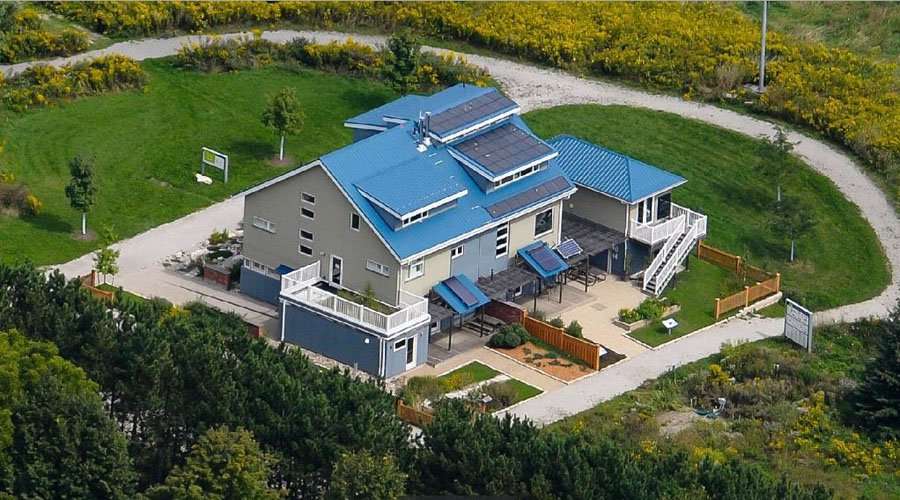














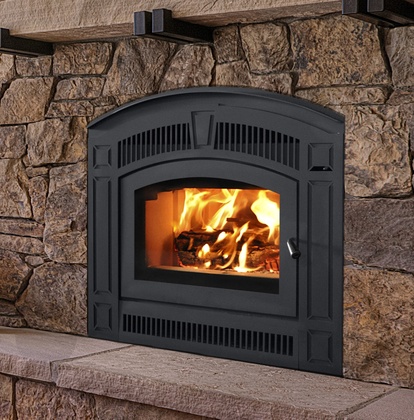

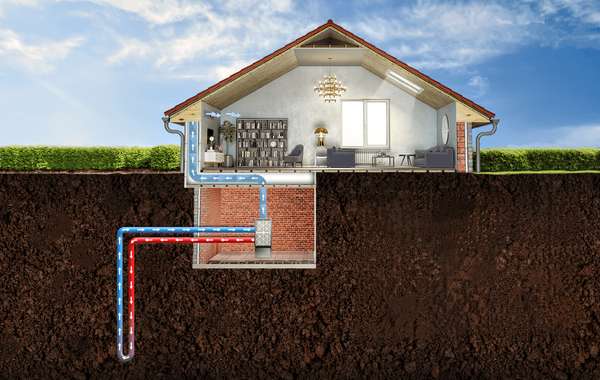
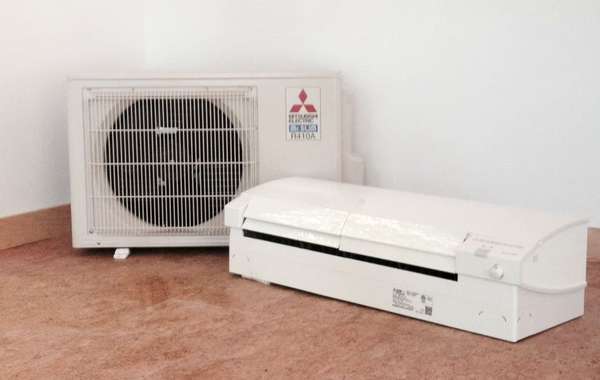
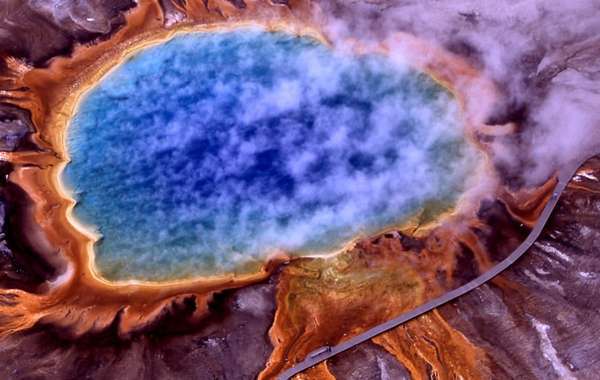
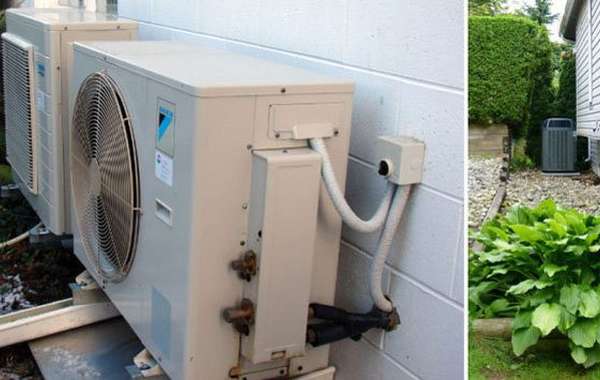
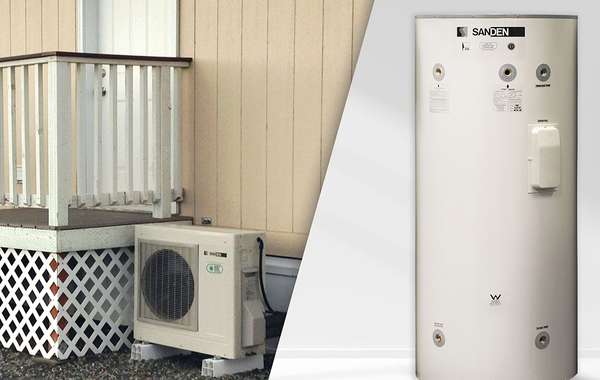
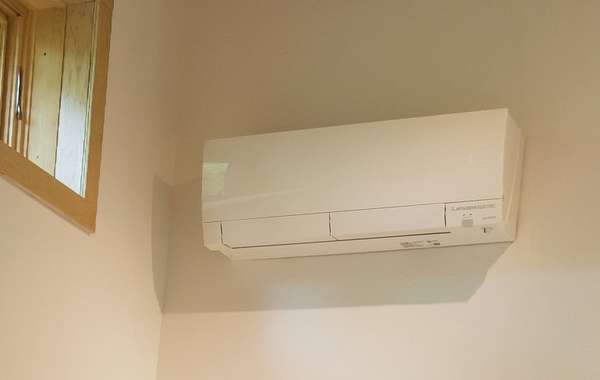
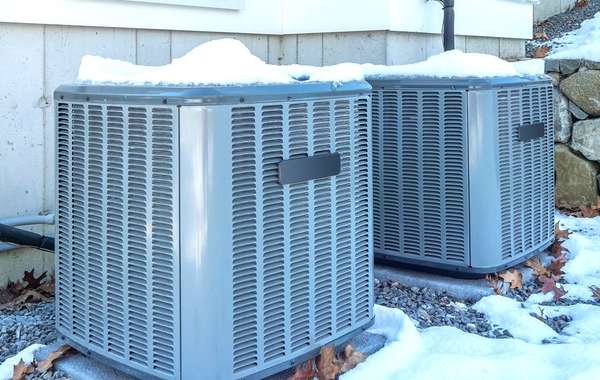
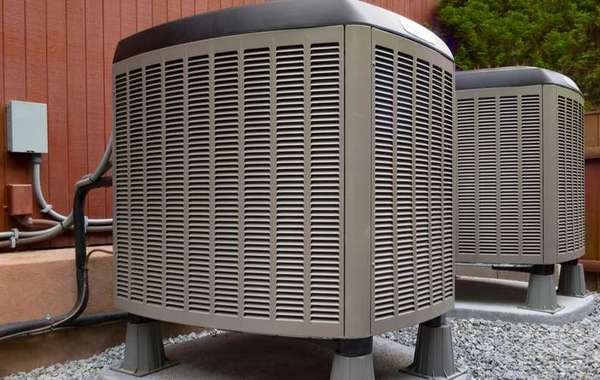
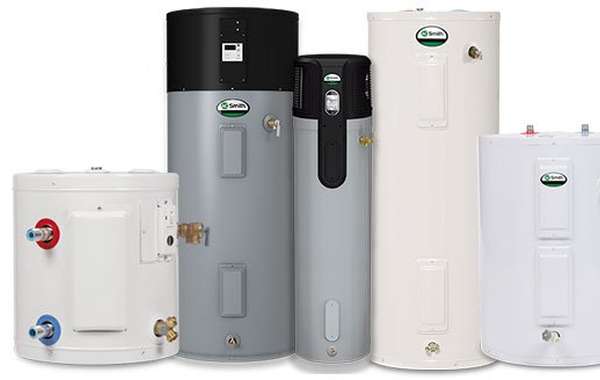
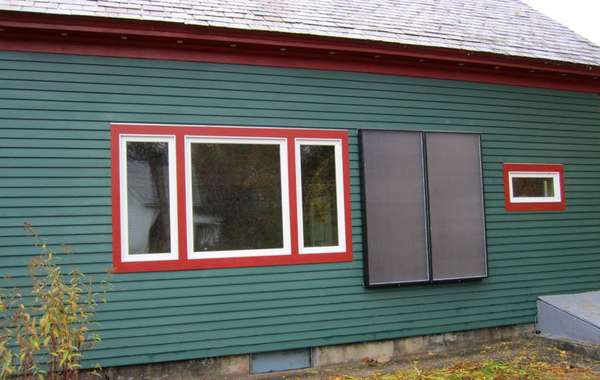
Are there truly no hybrid systems? Ground loop coolant to a main cabinet. Refrigerant lines to splits in the house. Essentially the same as the first stage of a GSHP coupled with splits.
This would add some expense to an air source system, but sidestep many issues when retrofitting a hydronic heat system equipped house. If the main cabinet is in the basement, then all refrigerant lines can be indoors and protected. I've seen a number of lines fail, but the stress of being outdoors (combined with wild critters in one case) seemed to be a major factor in the failure.
One of my neighbors got a quote on a GSHP system. It was over 120K, the majority of the cost being the interior refit for air ducting.
I think that Bob have a good point here, otherwise thanks a lot for that amazing article, I have to say, I can go through multiple articles about different construction subjects, this website always have the article that feel right. Thanks Mike for the article
Thanks Jeremie, I hadn't seen that comment above from Bob until you just posted. The article was written with the help of the Living City Campus near Toronto, and several years ago, so I would not really be in a postion to question Bob's suggestion to be honest. And thanks for the kind words Jeremie, it's always nice to hear people are enjoying it and finding value. Regards, Mike
Nice article well written. Can you add another variable to your mix? I'm concerned about the noise level of the ASHP. I'd be interested to see some data on this. I'd hate to add a pile of noise polution to my yard.